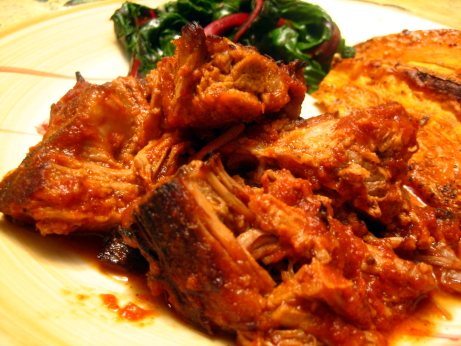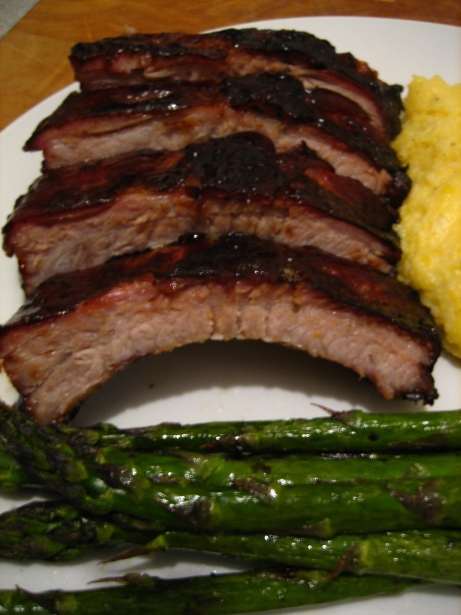I can’t find a copy of this recipe online.
Barbecue is one of those things I would dearly love to know a whole lot more about. But living in Montreal means that I’m unlikely to stumble across BBQ competitions, and there are very few pit masters looking to take on an apprentice. My lack of a back yard, or even a charcoal grill makes the situation even worse. This recipe was designed for us city dwellers who want to give apartment barbecue a try. This recipe comes as close as possible to making real barbecue without access to an open flame. It’s basically braised pork shoulder flavoured with cider vinegar, carrot, celery, onion, garlic, and peppercorns. The braised pork is doused in cider vinegar and roasted in the oven for an hour. The pork is then chopped, and mixed with Tomato Barbecue Sauce and warmed through. It’s supposed to be served with white rolls and coleslaw, but it went well with swiss chard and sweet potatoes.
The Good: The real plus of this recipe is that it kinda tastes like barbecue, and you can do it in the kitchen at any time of the year. The pork was moist with a nicely crisped exterior, and the long braise got a lot of flavour into the meat. I’m always a fan of using pork shoulder, because it’s very very inexpensive, and wonderfully flavourful. I think it’s got the best dollar to flavour ratio of any cut of meat out there.
The Bad: Vinegar. The Tomato Barbecue Sauce was too heavy on the vinegar all on it’s own, but the pork was braised in vinegar, then roasted and basted with vinegar before being mixed with a vinegar barbecue sauce. Everyone felt a little bit pickled after dinner.
The Verdict: Overall this was a fairly successful technique for barbecue without a barbecue. It utterly failed to recreate the smoky goodness of outdoor grilling, but sometimes you take what you can get. I know barbecue purists look down on liquid smoke, but I’d consider adding a few dashes when they’re not looking. The flavours in this dish were generally good, and the meat was wonderfully falling apart tender, but the acid was just too much for me to fully get behind.

